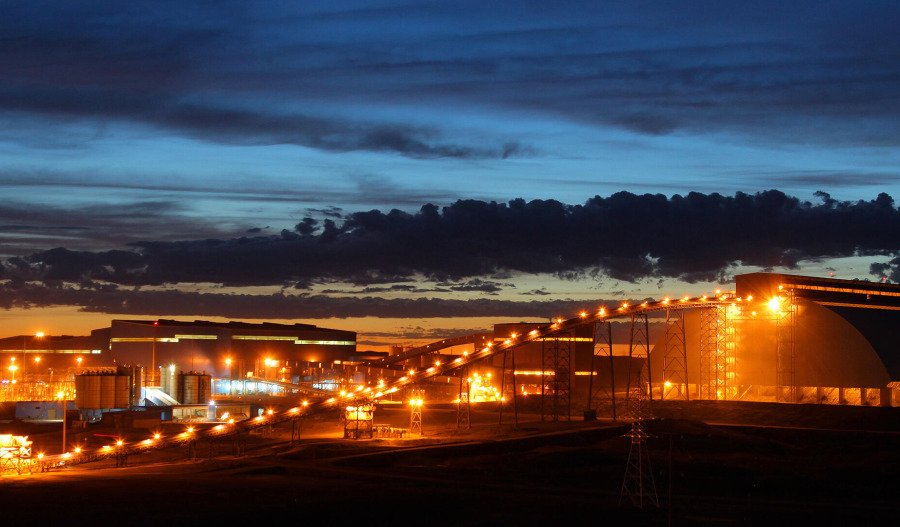Copper has breached US$10,000 per tonne for the first time since March, but this rally - like many sector prices at the moment - isn't built on fundamentals. It's orchestrated chaos in an inventory-starved market.
The red metal's cash price breached the US$10K mark on Monday, says Benchmark Intelligence (BMI) data, following a relatively stable week and marking a dramatic return to five-figure territory for the industrial bellwether.
Yet beneath the headline lies a market increasingly divorced from reality. One where BMI notes that the current London Metals Exchange (LME) price and spread movements are not fundamentally driven, rather they're influenced by short covering and significant positions being taken by specific market participants.
This crossover has turned copper pricing into a high-stakes game where fundamentals take a back seat.
It's a backwardation bonfire
BMI says Monday's breach through $10,000/t came amid a vicious ‘backwardation’ that would make “even seasoned traders wince”.
The cash-to-three-month spread exceeded $300, while the tom/next spread rose to $69.
…don't worry folks, I didn't understand any of that either.
For the uninitiated (or those that just need a refresher?), backwardation refers to either genuine shortages or speculative positioning - and market participants are crystal clear about which camp this falls into.

"We think this spread is orchestrated," said one warrant trader, with a second trader noting they also didn't believe it was fundamentally driven.
When traders are openly calling manipulation instead of being the ones to manipulate - you know the market has entered uncharted waters.
The LME subsequently responded with emergency measures over the weekend that compel holders of long-positions that are larger than current LME stocks (excluding any stock they themselves hold) to lend back to the market without a premium.
…it's the exchange equivalent of breaking up a bar fight before things get completely out of hand.
Cu-pboards are bare
Behind the financial theatrics, BMI posturing, lies a genuinely concerning physical reality: copper inventories are at dangerously low levels.
“The broad LME/CME arbitrage has led to huge stock movements to the U.S. and meant that global copper supplies are poorly positioned, thanks to persistent fears that Washington might slap tariffs on copper imports.”
BMI says traders including Trafigura Group and Mercuria Energy Group are drawing down stocks of copper on the LME, as strong Chinese buying tightens the market.
The orders cut available inventories of copper on the LME in Asia to the lowest in a year, creating a self-reinforcing cycle of scarcity.
Mercuria head of metals Kostas Bintas warned in March that the rush to ship metal to the U.S. to avoid potential tariffs risked leaving the rest of the world dangerously short of the red metal, and predicted that prices could hit record highs.
Smelter squeeze
While speculators play games with spreads, the copper supply chain faces a fundamentally more serious crisis.
Treatment and refining charges (TC/RCs) - the fees miners pay smelters to process copper concentrate - have collapsed to levels that threaten the industry's fabric.
A Reuters poll of industry sources showed forecasts much lower than the 2024 benchmark of $80/t, with expectations spanning from the high teens to $50/t.
Some forecasts venture even lower: Fastmarkets analyst Andrew Cole forecasts an annual average spot TC of $10.70/t for 2025.
For instance JX Metal, Japan's biggest IPO (US$3 billion) since Softbank floated, announced they're considering reducing their concentrate processing capacity.
Tight concentrate supplies mean the smelter's cuts to refined production will be >10,000tpa, a move that follows closures at its Tsumeb smelter in Namibia and Glencore's Pasar facility, all citing concentrate shortages.
Yet the full impact of these ultra-low processing fees has yet to hit, as most 2024 contracts were locked at much higher rates.
2025: Reality bites
What makes the current situation particularly unsettling is how divorced copper pricing has become from broader economic signals.
“Copper’s cash price is starting the week at an elevated level - both in absolute terms and relative to the three-month price,” BMI notes.
"This could put downward pressure on prices as the week progresses. A short squeeze appears to be driving the cash price higher, but if that unwinds, it will likely weigh on the cash price.
Geopolitical uncertainty may also put copper at risk.
"Tensions between the U.S. and Iran continue to mount with Iran bombing US bases in Qatar on Monday. U.S. GDP will also be watched closely, as well as with Chinese PMI data.
Yet the LME copper price seems to be relatively undeterred by the large-scale geopolitical uncertainty unfolding around it compared to peer commodities - notably the escalating tensions in the Middle East tensions that sent oil markets into a tailspin.
As always, China remains the wild card in the red metal equation, as it consumes ~60% of global copper ore and refines more than 45%.
Recent data showed Shanghai copper stockpiles climbed to a 51 month high of 339,964mt in early June, suggesting domestic demand weakness.
BMI says the contradiction is stark: as Chinese warehouses overflow, global inventories outside China remain perilously thin - a structural reality that China is responsible for ~56% of global copper consumption.
Looming deficit
Strip away financial engineering and geopolitical noise, and copper faces serious supply constraints.
However there are glimmers of hope in certain pockets of the industry. UN Trade and Development notes that with primary production lagging, recycling is becoming a key part of the solution.
In 2023, secondary refined copper made up 4.5mt - almost 20% of the total global output.
The International Copper Study Group projects global mined copper output will rise about 2.3% in 2025 to about 23.5mt as several major projects ramp up.
Yet this supply increase may prove insufficient against growing demand from electrification and renewable energy infrastructure.
Goldman Sachs maintains its bullish long-term outlook despite cutting near-term forecasts, while one bank noted, warning that any price dip that deters investment will now only "tighten the medium-term outlook".



